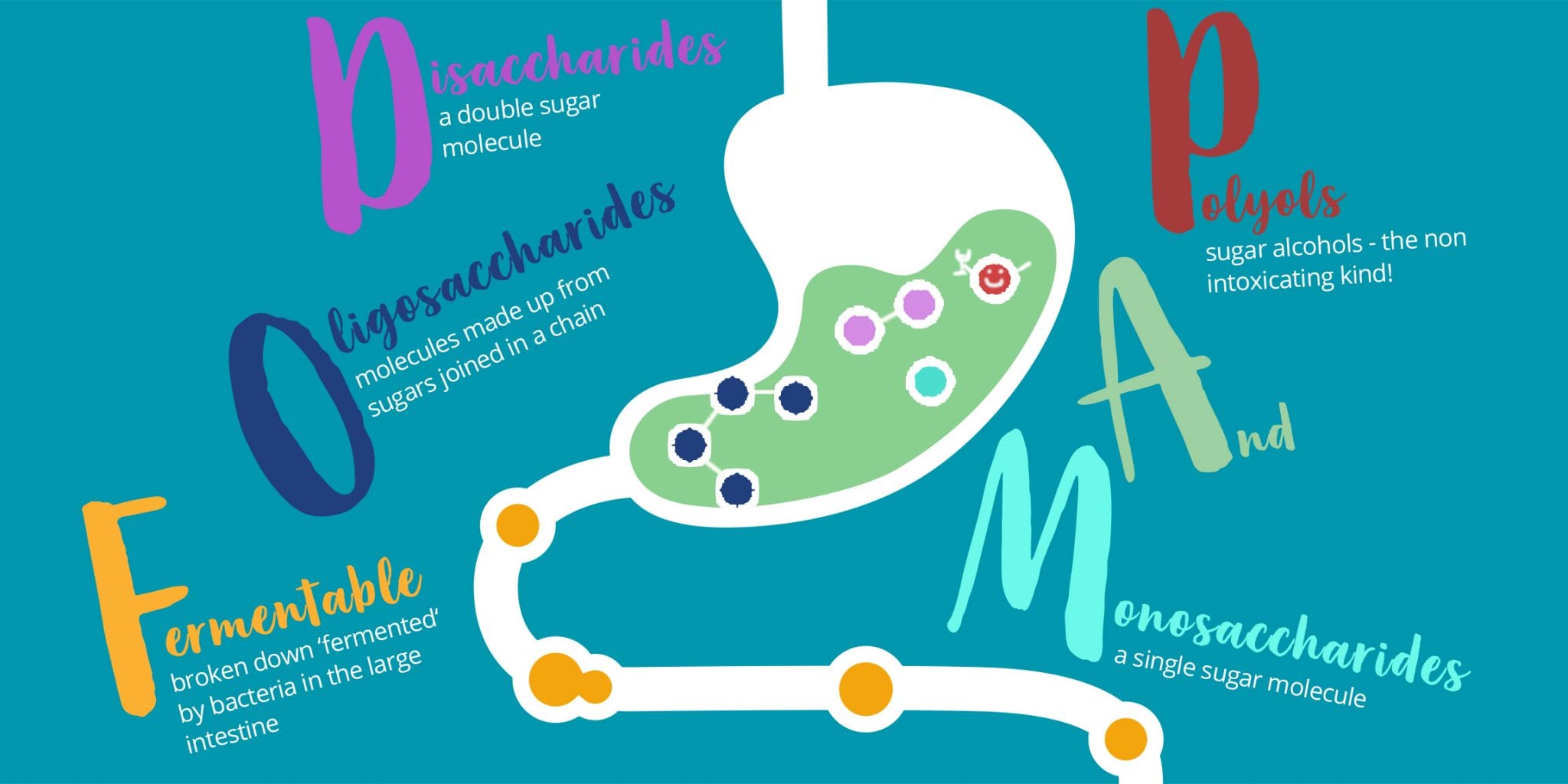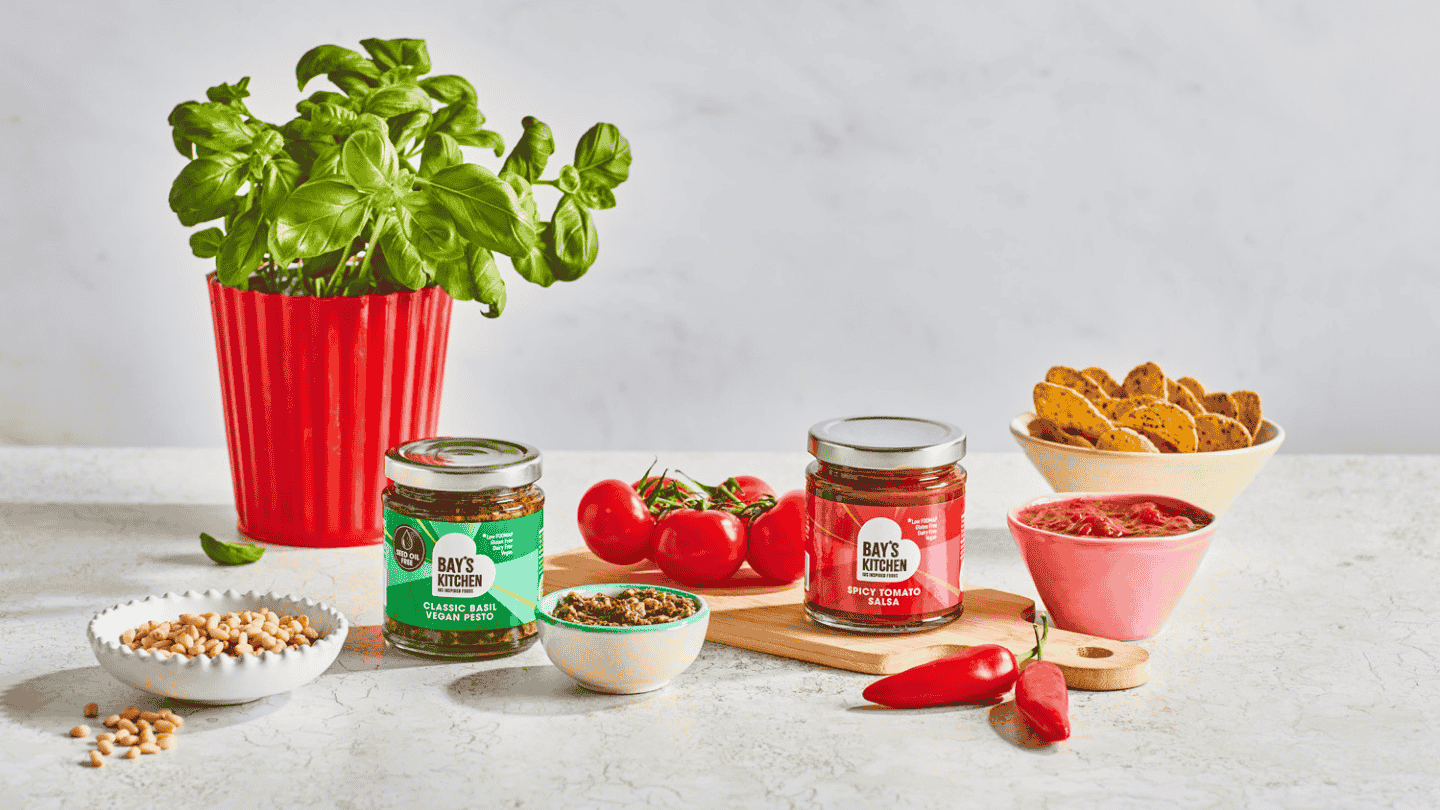First, let’s begin with IBS
Many of us have a sensitivity to certain foods and can experience a variety of symptoms as a consequence. This can be anything from abdominal cramps, bloating and back pain to diarrhoea and constipation to name but a few. Irritable Bowel Syndrome (IBS) is the term used to describe a collection of frequent abdominal discomfort and bowel symptoms.
FODMAPs in a nutshell
FODMAP is an acronym that has been given to a group of short chain carbohydrates that are poorly absorbed in the small intestine, resulting in the symptoms experienced with IBS. FODMAPs are naturally present in certain foods and a diet that contains a low amount of FODMAPs (a “low FODMAP diet”) has been found to improve the control of IBS symptoms by a research team at Monash University in Australia.

Examples of Foods That Contain FODMAPS
Wheat, rye, barley, onions, leeks, shallots, garlic, legumes, lentils, artichokes, chicory, asparagus, beetroot, milk, evaporated milk, yoghurt, custard, ice-cream, honey, mango, watermelon, apples, pears, high fructose corn syrup, apricots, nectarines, plums, cauliflower and products sweetened with polyols such as confectionary.

Low FODMAP Diet Suggested Foods
Alfalfa, bean sprouts, green beans, bok choy, capsicum, carrot, chives, fresh herbs, cucumber, lettuce, tomato, zucchini, banana, orange, grapes, melon, meat, fish, tofu, lactose-free milk, lactose-free yoghurts, hard cheese, gluten-free bread, sourdough spelt bread, oats, gluten-free pasta, rice, quinoa, almonds and pumpkin seeds.
What Else?
The lists above are by no means complete, but an introduction to some of the foods that are recommended as part of a FODMAP diet, or best to avoid. Whilst some foods appear in the suggested foods section, at particular portion sizes they may become high in FODMAPs and therefore should be avoided in those quantities. Likewise, whilst some foods are mentioned to be avoided, in much small portions they may be low in FODMAPs and so can be tolerated by most individuals in those quantities.
We strongly recommend you to download the Monash University Low FODMAP app, which provides a comprehensive guide to which foods are high and low in FODMAPs at particular quantities.
Carbohydrates that are not absorbed in the small intestine travel into the large intestine where they are fermented (remember the ‘F’ from FODMAP!) by bacteria. A by-product of this fermentation is gas that potentially results in bloating and flatulence. For most people this is not an issue, but some may suffer the symptoms of IBS. A low FODMAP diet has been found to improve of symptoms of IBS.
MORE INFORMATION AVAILABLE
For further information on IBS and FODMAPs, just have a browse around our website and blog. If you are new to following a low FODMAP diet, we strongly recommend you seek advice and guidance from trained doctors and specialist dieticians before starting the diet.
And remember – our sauces are certified low FODMAP, so if you’re ever stuck for dinner simply grab a jar of Bay’s Kitchen sauce and add your favourite low FODMAP ingredients!

How do Bay’s Kitchen help?
At Bay’s Kitchen we have spent a huge amount of time working with trained chefs and dieticians to create convenient, great tasting foods which are all Low FODMAP. We send all our products to be certified by FODMAP Friendly, so you can be safe in knowing they are suitable to eat whilst on the elimination stage of the diet.
We have focussed a lot on the flavour of our products, to ensure that you don’t have to compromise on taste! So yes, we have award-winning curry sauces without onion and garlic!!







